Essential tips for sourcing your Amazon products

Product sourcing for Amazon refers to the process of finding and acquiring products to sell on the Amazon marketplace. This can include identifying products that are in demand, negotiating with suppliers to obtain competitive pricing, and ensuring the products meet Amazon’s quality standards.
As an Amazon seller, sourcing products is a crucial aspect of building a successful business on the platform. The process of product sourcing can involve a variety of methods, including:
Wholesale purchasing: Buying products in bulk from a supplier and reselling them on Amazon.
Private label: Creating your own brand and having a manufacturer produce the products for you.
Retail arbitrage: Finding products at retail stores or online marketplaces at a discount and reselling them on Amazon.
Dropshipping: Partnering with a supplier who ships products directly to customers on your behalf.
Regardless of the method, effective product sourcing involves research, analysis, and relationship-building with suppliers. By sourcing quality products that meet customer demand, Amazon sellers can build a profitable business and achieve success on the platform.
Product sourcing can be a complex process that requires careful research and analysis to find the right products at the right price. Here are some general steps to follow for successful product sourcing:
Identify your niche: Start by choosing a niche or category of products you want to sell. This can help you focus your research efforts and become an expert in that area.
Research demand: Use tools like Amazon’s Best Sellers list, Google Trends, and social media to identify popular products and trends within your chosen niche. You can also look at customer reviews to see what products people are talking about.
Research suppliers: Look for reliable and trustworthy suppliers for the products you want to sell. You can use directories like Alibaba, Global Sources, and ThomasNet to find suppliers, or attend trade shows and network with suppliers in your industry.
Analyze pricing and profitability: Once you’ve found potential suppliers, compare their pricing to ensure you can make a profit on the products you want to sell. Be sure to factor in other costs like shipping and storage fees.
Order product samples: Before making a large order, it’s important to test the quality of the product by ordering a sample. This can help you identify any potential issues before committing to a large order.
Place an order: Once you’ve found a supplier and tested the product, place a small order to test the market and see how well the product sells.
Build relationships with suppliers: Maintain good relationships with your suppliers by communicating regularly and paying on time. This can help you secure better prices and terms in the future.
Overall, successful product sourcing requires a lot of research, careful analysis, and good communication with suppliers. By following these steps and staying vigilant, you can find quality products to sell on Amazon and build a successful business.
Successful product sourcing requires a combination of skills, knowledge, and resources. Here are some key requirements to consider:
Market knowledge: A successful product sourcing strategy starts with a deep understanding of your target market. You should have a good grasp of customer needs, preferences, and trends, as well as an understanding of the competitive landscape.
Supplier network: Building a strong supplier network is crucial for successful product sourcing. You should have relationships with reliable suppliers who can provide you with high-quality products at a reasonable price.
Negotiation skills: Negotiating with suppliers is an important aspect of product sourcing. You should be able to negotiate effectively to get the best possible price and terms.
Quality control: Ensuring that the products you source meet your quality standards is essential for maintaining customer satisfaction and building a good reputation. You should have a system in place for quality control and product testing.
Logistics and supply chain management: Managing the logistics and supply chain for your products can be challenging, particularly if you’re dealing with international suppliers. You should have a good understanding of logistics and be able to manage the shipping and storage of your products.
Financial management: Successful product sourcing requires a good understanding of financial management. You should be able to manage your cash flow, track your expenses, and maintain a healthy profit margin.
Data analysis: Analyzing data is essential for identifying trends and making informed decisions about product sourcing. You should be able to track sales data, analyze customer feedback, and use data to inform your sourcing strategy.
By developing these skills and resources, you can create a successful product sourcing strategy that will help you find the best products to sell on Amazon and build a thriving business.
Shipping sourced products to an Amazon warehouse involves several steps. Here’s an overview of the process:
Create a shipment plan: Before you can send your products to an Amazon warehouse, you need to create a shipment plan in your Amazon seller account. This involves specifying the products you’re sending, the quantity, and the destination warehouse.
Prepare your products for shipment: Once you’ve created a shipment plan, you need to prepare your products for shipment. This may involve labeling, packaging, and palletizing your products according to Amazon’s guidelines.
Choose a carrier: You can use Amazon’s partnered carriers or choose your own carrier to transport your products to the Amazon warehouse. If you choose your own carrier, you’ll need to provide the carrier with the shipment details and delivery address.
Generate shipping labels: You’ll need to generate shipping labels for each box or pallet you’re shipping. You can print these labels through your Amazon seller account, or use a third-party labeling service.
Deliver the products to the carrier: Once your products are packaged and labeled, you can deliver them to the carrier for transport. Be sure to obtain a tracking number or other proof of delivery to track your shipment.
Track the shipment: Once your shipment is en route, you can track its progress using the carrier’s tracking system. You should also monitor your Amazon seller account for any updates on the status of your shipment.
Confirm receipt of the shipment: After your shipment arrives at the Amazon warehouse, Amazon will confirm receipt and update your seller account with the status of your products.
Overall, shipping sourced products to an Amazon warehouse requires careful planning and attention to detail. By following Amazon’s guidelines and ensuring that your products are properly labeled and packaged, you can ensure a smooth and successful shipment process.
Shipping sourced products to an Amazon warehouse requires following certain requirements and guidelines to ensure the products are received and processed correctly. Here are some of the key requirements to keep in mind:
Labeling: Each product must be labeled with a scannable barcode that includes the Amazon Standard Identification Number (ASIN) and your unique seller SKU. The label must be clear, readable, and securely attached to the product.
Packaging: Products must be packaged securely to prevent damage during transit. You should use sturdy boxes, bubble wrap, and packing materials to protect the products. Be sure to follow Amazon’s packaging guidelines to ensure that the products are received in good condition.
Shipment details: When you create your shipment plan in your Amazon seller account, you must provide accurate information about the products you’re sending, the quantity, and the destination warehouse. You’ll also need to specify the carrier you’re using and the shipment method.
Carrier requirements: If you’re using a carrier other than Amazon’s partnered carriers, you’ll need to ensure that the carrier meets Amazon’s requirements for carrier eligibility. You’ll also need to provide the carrier with the necessary shipping labels and delivery address.
Delivery window: You’ll be assigned a delivery window for your shipment based on the carrier and warehouse location. Be sure to deliver your products within the specified window to avoid delays and additional fees.
Tracking and confirmation: You should use a carrier that provides tracking information so that you can monitor the status of your shipment. Once your shipment has been delivered to the Amazon warehouse, Amazon will confirm receipt and update your seller account with the status of your products.
By following these requirements and guidelines, you can ensure that your sourced products are shipped to the Amazon warehouse in a timely and efficient manner, and that they are received and processed correctly.
In conclusion, sourcing products to sell on Amazon can be a challenging but rewarding process. To be successful, you need to have a deep understanding of your target market, develop a strong supplier network, and have the necessary skills and resources to negotiate effectively, manage logistics, and ensure quality control.
Once you’ve sourced your products, you’ll need to ship them to an Amazon warehouse to be stored, processed, and fulfilled. This involves following certain requirements and guidelines, including labeling and packaging your products correctly, providing accurate shipment details, and choosing a carrier that meets Amazon’s eligibility requirements. By following these guidelines and requirements, you can ensure that your products are received and processed correctly, and that your customers receive their orders in a timely and efficient manner.
Overall, successful product sourcing and shipment to Amazon warehouses requires careful planning, attention to detail, and the ability to adapt to changing market conditions and customer needs. With the right strategies, resources, and skills, you can build a thriving business selling products on Amazon.
I hope you found this article helpful. Many Amazon sellers recently started trading stocks and crypto currencies, hoping to diversify their income, which is a very good idea with all the uncertainty which comes with the platform. For this reason, we launched a new Facebook group, Crypto Arbitrage Income (Bitcoin, Crypto, Altcoins, Blockchain, Trading) – feel free to join us and forget about the troubles of selling on Amazon for a moment!
Regarding Amazon Seller Performance, you can always participate in our Amazon Seller Performance – Friendly Advice – Worldwide group, where you will be very welcome.
If you are an Amazon Seller who needs help with any Amazon-related issues such as suspensions, listing blocks or is looking for professional assistance, please don’t hesitate to subscribe to my new OnlyFans page at: www.onlyfans.com/kikaangelic
In case you are an Amazon Seller who needs help with Seller Identity Verification on Amazon, please feel free to watch my most detailed video on the subject, addressing all common questions:

If you are one of the millions of third party sellers doing business across Amazon’s platforms, you are already used to having to adapt to the announcements of extremely strict, unexpected policies which lack clarifications of the most crucial points.
This evening, Amazon suddenly e-mailed their third party sellers on the United States platform to inform them about a newly-announced policy called “On-time delivery rate” or OTDR. Here you can review the full policy.
Many sellers reacted with confusion, anger and outrage and expressed their views on social media. In this article, I would like to respond with clarification to the most common concerns.
Below you can review the e-mail from Amazon regarding On-time delivery policy:
| New updates to our On-time delivery policy and changes to shipping settings Dear seller, Fast and accurate delivery is essential for customers and often determines where they choose to shop. Over time, we’ve learned that the best way to ensure reliable on-time delivery for customers is to set accurate Handling and Transit Times and to choose reliable shipping services. To help reduce late deliveries and improve delivery speeds, we’re updating our On-time delivery rate (OTDR) policy. Effective 09/23/2024 [60 days from today], you’ll need to maintain a minimum 90% On-time delivery rate (OTDR) without promise extensions to have seller-fulfilled products listed on Amazon.com. We will start by addressing sellers with the lowest OTDR performance. This policy does not apply to offers using the Fulfilled by Amazon (FBA) service because sellers are not responsible for on-time delivery promises for FBA orders. Your current OTDR, calculated between 7/5/2024 and 7/18/2024 is 100.0%. Your account is currently in healthy OTDR standing. You can manage your delivery dates using the tools we’ve provided, or you can manually adjust your Transit Time and Handling Time settings. We designed these tools to set accurate delivery dates, reduce late deliveries, and to meet or exceed the minimum OTDR requirement, and because Amazon is making calculations on your behalf that affect OTDR, you will get OTDR protection from late deliveries on items shipped through Standard Shipping if you use all three tools as follows: a) Shipping Settings Automation (SSA), for Professional sellers, sets accurate delivery dates through automated Transit Time calculations of your preferred shipping services. You must choose one of the preferred ship methods in the SSA templates, which will mark the Transit Time on the shipping template as “Managed by Amazon”. b) Automated Handling Time (AHT), for Professional sellers, sets accurate Handling Times per SKU based on how long it usually takes you to pass each SKU to carriers. You must ensure that AHT is enabled in your shipping settings. c) Amazon Buy Shipping, for both Professional and Individual selling plans, sells shipping labels that use highly-reliable ship methods. You can use Amazon Buy Shipping through Manage Orders, Shipping API, Veeqo, or select multi-channel integrators with access to Amazon Buy Shipping. You must choose shipping labels marked as “OTDR Protected” when using Amazon Buy Shipping or Veeqo. We’ll also make changes to shipping settings to help Professional sellers set more accurate delivery dates: a) Transit Time settings: On 08/24/24 [30 days from today], our Transit Time requirements will be updated to match the delivery capabilities of shipping services. If you are shipping within the contiguous United States (excluding Hawaii, Alaska, and US territories), you can set a maximum Transit Time of 5 days for Standard shipping and 8 days for Free Economy shipping. To learn more, go to Default Transit Time. b) Handling Time settings: On 09/23/24 [60 days from today], to help improve the accuracy of Handling Time, we’ll enable Automated Handling Time (AHT) for sellers that have a manually configured Handling Time that is 2 or more days slower than their actual Handling Time (also known as a Handling Time gap). To see your Handling Time gap, review your Fulfillment Insight dashboard. You can review your OTDR on your Account Health dashboard. We also recommend you review the “Deliver by” dates for your orders to ensure they match the expected delivery date without promise extensions. To learn more, go to On-time delivery. Thank you, Fulfilled By Merchant Team |
This is the post published by Amazon regarding the matter elsewhere:
| New updates to our on-time delivery policy and shipping settings Fast and accurate delivery is essential for customers and often determines where they choose to shop. Over time, we’ve learned that the best way to ensure reliable on-time delivery for customers is to set accurate handling and transit times and to choose reliable shipping services. To help reduce late deliveries and improve delivery speeds, we’re changing our on-time delivery rate (OTDR) policy. Effective September 25, 2024, you’ll need to maintain a minimum 90% OTDR without promise extensions to have seller-fulfilled products listed on Amazon.com. We will start by addressing sellers with the lowest OTDR performance. For a great customer experience, we recommend that you maintain a 95% or greater OTDR for all seller-fulfilled orders. This policy does not apply to offers using the Fulfillment by Amazon (FBA) service because sellers are not responsible for on-time delivery promises for FBA orders. Also, we’ll make the following changes to shipping settings to help sellers with Professional selling plans set accurate delivery dates: Transit time settings: On August 25, 2024, our transit time requirements will be updated to match the delivery capabilities of shipping services. If you’re shipping within the contiguous United States (excluding Hawaii, Alaska, and US territories), you can set a maximum transit time of five days for standard shipping and eight days for free economy shipping. To learn more, go to Default transit time. Handling time settings: On September 25, 2024, to help improve the accuracy of handling time, we’ll enable automated handling time for sellers that have a manually configured handling time that is two or more days slower than their actual handling time (also known as a handling time gap). To see your handling time gap, review your Fulfillment Insight dashboard. We understand changes like this are significant and require time to prepare. You can manage your delivery dates using the tools we’ve provided, or you can manually adjust your transit time and handling time settings. We designed these tools to set accurate delivery dates, reduce late deliveries, and to meet or exceed the minimum OTDR requirement, and because Amazon is making calculations on your behalf that affect OTDR, you will get OTDR protection from late deliveries on items shipped through standard shipping if you use all three tools as follows: Shipping Settings Automation (SSA), for Professional selling plans, sets accurate delivery dates through automated transit time calculations of your preferred shipping services. You must choose one of the preferred ship methods in the SSA templates, which will mark the transit time on the shipping template as “Managed by Amazon.” Automated handling time, for Professional selling plans, sets accurate handling times per SKU based on how long it usually takes you to pass each SKU to carriers. You must ensure that automated handling time is enabled in your shipping settings. Amazon Buy Shipping, for both Professional and Individual selling plans, sells shipping labels that use highly-reliable ship methods. You can use Amazon Buy Shipping through Manage Orders, Shipping API, Veeqo, or select multi-channel integrators with access to Amazon Buy Shipping. You must choose shipping labels marked as “OTDR Protected” when using Amazon Buy Shipping or Veeqo. You’ll receive an email with your current OTDR and recommendations on how to improve if you’re below the minimum requirement. To learn more, review your OTDR on your Account Health dashboard or go to On-time delivery. |
While this policy brings nothing new to most FBM Amazon sellers who are based in the United States or major countries with Amazon marketplace presence, it may sound confusing and bring uncertainty to Amazon sellers outside of the Valid Tracking Rate criteria, who don’t have access to Buy Shipping Services. I would like to address the most common questions.
What does OTDR mean for international sellers?
For sellers based in smaller countries all over the world, including Europe, access to easily available international online trackable shipping is an unachievable luxury.
In smaller countries, there is no infrastructure to facilitate international shipping with online tracking. As the OTDR policy states, using the Buy Shipping Services is the recommended way of complying with the OTDR policy. However, Buy Shipping Services are not available in countries with lack of international online tracking services offered and provided by carriers.
Because of this, sellers with no access to Buy Shipping Services have always been exempt from the Valid Tracking Requirement and also any other tracking-related metrics and policies.
OTDR applies to all sellers equally. According to the policy, effective September 25, 2024, you must maintain a minimum 90% on-time delivery rate (OTDR) without promise extensions to have seller-fulfilled products listed on Amazon.com. An OTDR below 90% can result in restriction of your ability to have seller-fulfilled products listed.
If your OTDR is below 90%, you can appeal by clicking on “Submit appeal” at the top of your Account Health dashboard. Sellers on Individual selling plans or sellers on a Professional selling plan but shipping from outside the US must submit an appeal request indicating how they will improve their OTDR.
However, the OTDR measures the percentage of your tracked seller-fulfilled items that were delivered on or before the seller-promised “Deliver by” date. OTDR is the average of all of your tracked shipped items, not just a specific SKU or shipment.
This means that if you are not subject to Valid Tracking Rate requirement, then only the performance of your tracked FBM orders will be measured for OTDR percentage calculation.
Please note that the OTDR policy doesn’t mean that you will now have to ship every FBM order tracked.
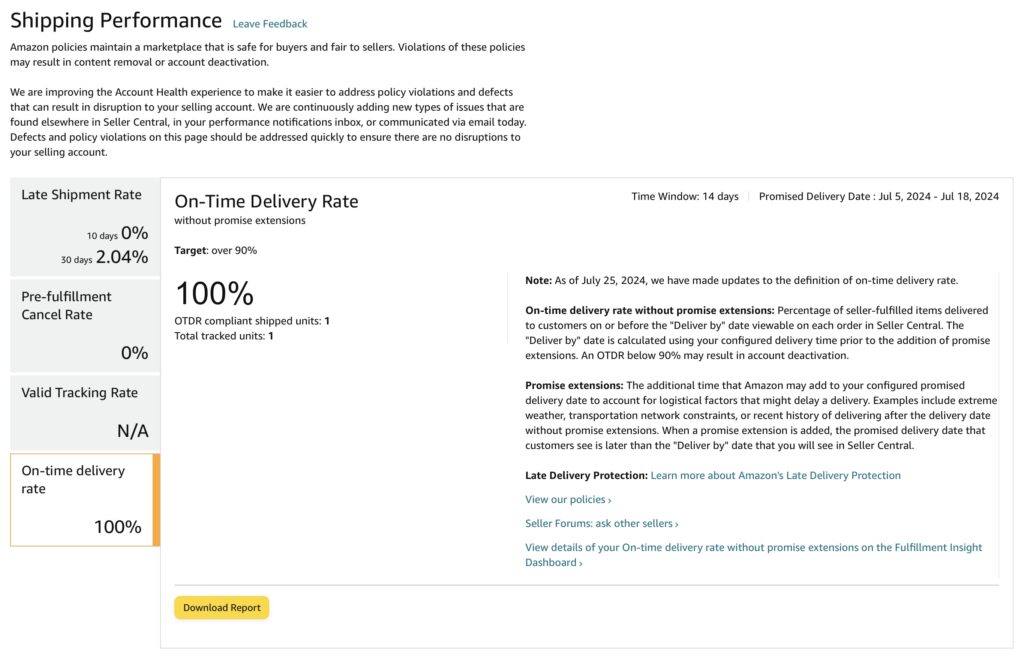
Does Amazon offer any tools for international sellers that can help them improve their OTDR and meet the Amazon’s OTDR requirements?
No. OTDR Protection is only applicable to Professional sellers shipping from the US, as all of the required tools are currently not available on Individual selling plans or to Professional sellers that are shipping from outside of the US.
This indicates that if you are an international Amazon Seller who decides to ship orders tracked, you will need to carefully select a carrier who can deliver within each order’s promised Estimated Delivery Date, otherwise you may have your FBM shipping ability revoked.
What are “Promise Extensions”?
Promise Extensions are the additional time that Amazon may add to your configured promised delivery date to account for logistical factors that might delay a delivery. Examples include extreme weather, transportation network constraints, or recent history of delivering after the delivery date without promise extensions. When a promise extension is added, the promised delivery date that customers see is later than the “Deliver by” date that you will see in Seller Central.
When your order is subject to a Promise Extension, the customer may be unable to open an A-Z claim and will be advised to wait until the order gets delivered.
Where can I access my current OTDR performance?
The OTDR metric is currently only available on the United States platform. You can view your performance by accessing the Account Health Dashboard, where the metric is on the right side, under Shipping Performance as “On-Time Delivery Rate without promise extensions”.
Where to get more help and information regarding OTDR
If you have any other questions related to the OTDR and need fast and professional assistance provided for free and without wait, join our discussion forum for Amazon Sellers.
To stay in touch on Facebook, feel free to join and post into my large Amazon Seller Performance – Friendly Advice – Worldwide Facebook group, where you will be very welcome too.
Here, you can also review the full OTDR policy reposted from Amazon help page, which mainly focuses on answering the questions from US based sellers:
| Frequently asked questions about on-time delivery rate (OTDR) What is Amazon’s policy for on-time delivery without promise extensions? Effective September 25, 2024, you must maintain a minimum 90% on-time delivery rate (OTDR) without promise extensions to have seller-fulfilled products listed on Amazon.com. An OTDR below 90% can result in restriction of your ability to have seller-fulfilled products listed. For a great customer experience, we recommend that you maintain a 95% or greater OTDR for all seller-fulfilled orders. What is changing? Our updated policy requires a minimum 90% OTDR without promise extensions to have seller-fulfilled products listed on Amazon.com. An OTDR below 90% can result in restriction of your ability to have seller-fulfilled products listed. To help provide a positive customer experience, we recommend that you maintain a 95% or greater OTDR for all seller-fulfilled orders. We are also changing the way we measure OTDR to now measure the percentage of your tracked seller-fulfilled items that were delivered on or before the seller-promised “Deliver by” date prior to promise extensions being added. Before this change, OTDR was measured after promise extensions were added. Promise extensions are additional days that we may add to the delivery date to account for logistical factors that may delay a delivery such as extreme weather, transportation network constraints, or recent history of a seller delivering shipments after their set delivery date. This policy does not apply to offers using the Fulfillment by Amazon (FBA) service because sellers are not responsible for on-time delivery promises for FBA orders. Note: We will communicate as we roll out the OTDR policy, and any changes from the policy as it stands today, that may affect you. What will happen to my account if my OTDR falls below the 90% minimum requirement? An OTDR below 90% can result in restriction of your ability to have seller-fulfilled products listed. If that happens, we’ll notify you of the policy violation and you can appeal by clicking the Submit appeal button at the top of your Account Health dashboard to request reinstatement of your capabilities to list seller-fulfilled products. The request will be reviewed within 72 hours and should include the following information: The issues that led to a low on-time delivery rate The actions that you’ll take to improve your on-time delivery rate The steps that you’ve taken to prevent future issues regarding on-time delivery On subsequent policy violations, if your OTDR is still below 90%, you can appeal by clicking Submit appeal at the top of your Account Health dashboard. To get reinstated: Sellers on Individual selling plans or sellers on a Professional selling plan but shipping from outside the US must submit an appeal request indicating how they will improve their OTDR. Professional sellers that ship domestically within the US will be required to meet the 90% OTDR requirement by using the following Amazon free-to-use fulfillment and shipping tools for their seller-fulfilled orders for the next 180 days: Shipping Settings Automation (SSA) to set accurate delivery dates through automated transit time calculations of your preferred ship methods. Automated handling time to set accurate handling times per SKU, based on how long it usually takes you to pass each SKU to carriers. For new SKUs, the default handling time will apply until there are enough shipments for your automated handling time to be calculated. Amazon Buy Shipping to buy shipping labels that use highly reliable shipping methods for both Professional and Individual selling plans. You can use Amazon Buy Shipping through Manage Orders, Shipping API, Veeqo, or select multi-channel integrators with access to Amazon Buy Shipping. How is OTDR calculated? OTDR measures the percentage of your tracked seller-fulfilled items that were delivered on or before the seller-promised “Deliver by” date. OTDR is the average of all of your tracked shipped items, not just a specific SKU or shipment. To calculate OTDR without promise extensions, we’ll consider a 14-day window of time. We’ll pull data from shipments that had a promised delivery date in the last 21 days, and exclude the most recent 7 days as the shipments from last 7 days may still be in the process of being delivered. For example, if you had 130 orders with a promised delivery date in the last 21 days, and 30 of those has a promised delivery date in the last 7 days, OTDR will be calculated excluding the 30 orders from the last 7 days (130 – 30 =100). Of those 100 orders delivered, if 90 were delivered on or before the promised “Deliver by” date, your OTDR would be 90%. Seller’s promised “Deliver by” date is calculated using seller-set handling and transit time, prior to the addition of promise extensions. This date may be different than the delivery date shown to customers if promise extensions were added. For example, for a seller with a set handling time of 1 day and set transit time of 2 days: The promised “Deliver by” date will be in 3 business days. So, if an order is received on a Monday, this order would need to be delivered by Thursday (seller-promised “Deliver by” date) to be considered delivered on time. However, if 1 day of promise extensions was added to that offer, the promised delivery date the customer saw while purchasing would have been Friday. Irrespective of the date shown to the customer (Friday), sellers must deliver by their set “Deliver by” date (Thursday) for the shipment to be considered delivered on-time. Shipped units will be considered as OTDR compliant if either the delivery occurred on or before the “Deliver by” date shown on Seller Central, or the following 3 conditions were met: The shipped SKU was assigned to a shipping template with Shipping Settings Automation (SSA) enabled. Your account has automated handling time enabled. You bought an “OTDR Protected” shipping label on Amazon Buy Shipping. Note: OTDR Protection is only applicable to Professional sellers shipping from the US, as all of the required tools are currently not available on Individual selling plans or to Professional sellers that are shipping from outside of the US. Does Amazon offer tools that can help me improve my OTDR and meet the Amazon’s OTDR requirements? Yes. You can manage your delivery dates using the tools we’ve provided, or you can manually adjust your Transit time and Handling time settings. We designed these tools to set accurate delivery dates, reduce late deliveries, and to meet or exceed the minimum OTDR requirement. And because Amazon is making calculations on your behalf that affect OTDR, you’ll get OTDR protection from late deliveries on items shipped through standard shipping if you use all three tools as follows: Shipping Settings Automation (SSA), for Professional selling plans, sets accurate delivery dates through automated transit time calculations of your preferred shipping services. You must choose one of the preferred ship methods in the SSA templates, which will mark the transit time on the shipping template as “Managed by Amazon”. Automated handling time, for Professional selling plans, sets accurate handling times per SKU based on how long it usually takes you to pass each SKU to carriers. You must ensure that automated handling time is enabled in your shipping settings. Amazon Buy Shipping, for both Professional and Individual selling plans, sells shipping labels that use highly-reliable ship methods. You can use Amazon Buy Shipping through Manage Orders, Shipping API, Veeqo, or select multi-channel integrators with access to Amazon Buy Shipping. You must choose shipping labels marked as “OTDR Protected” when using Amazon Buy Shipping or Veeqo. Note: OTDR Protection is only available for items shipped through Standard Shipping, items shipped through other shipping options such as Free Economy, Standard Prime, or Premium Shipping, are not eligible for OTDR protection. For example, if a seller shipped 100 orders and 15 were delivered late: Scenario A: If a seller did not use all three of Amazon’s free fulfillment and shipping tools for any of those 15 late deliveries, all 15 of their late deliveries will negatively impact their OTDR. As a result, their OTDR will be (100-15/100) = 85%. Scenario B: If a seller used all three of Amazon’s free fulfillment and shipping tools for 5 of those 15 late deliveries, only the 10 late shipments that were not using Amazon’s tools will negatively impact OTDR. As a result, the seller’s OTDR will be (100-10/100) = 90%. Note: OTDR Protection is only applicable to Professional sellers shipping from the US, as all of the required tools are currently not available on Individual selling plans or to Professional sellers that are shipping from outside of the US. Can I be exempted from the OTDR requirement if delivery delays are caused by weather or carrier network issues beyond my control? Sellers must meet the 90% OTDR requirement without promise extensions. However, if there is a major disruption event that impacts all sellers shipping to a specific region, Amazon will not count deliveries that are late as a result in your OTDR. Whether a disruption is considered to be major is a discretionary decision made by Amazon. What changes are you making to handling time and transit time settings? Transit time changes: As of August 25, 2024, transit time requirements will be updated to further align with the delivery capabilities of shipping services. If you’re shipping within the contiguous United States (excluding Hawaii, Alaska, and US territories), you can set a maximum transit time of 5 days for standard shipping (previously 8 days) and 8 days for free economy shipping (previously 10 days). To learn more, go to Default transit time. If you’re shipping internationally to the US, there are currently no changes to the transit times that you can configure. Handling time automation: As of September 25, 2024, to improve handling time accuracy, automated handling time will be enabled for sellers who have a handling time gap of 2 days or more between their set handling time and their actual handling time. To help you keep in good standing with other account health metrics related to handling time, if you have automated handling time enabled, your seller-fulfilled listings will not be deactivated if your late shipment rate (LSR) does not meet the LSR policy requirement. To see your handling time gap, review your Fulfillment Insight dashboard. How can I view my on-time delivery (OTD) metric and report? To view your OTD metrics and report on Seller Central: On the Performance menu, select Account Health. Locate the Shipping Performance section and select On-time delivery rate. You can see your OTDR metric on the Shipping Performance page. Only orders included in the current OTD defect report count against the OTDR metric. If the report contains no orders, it means either all of the orders were delivered on time or they fulfilled using Amazon’s free fulfillment tools. To download the OTD defect report, click View details and then Download report. Important: Allow 72 hours for the report and metrics to reflect any updates or edits. How can I maintain a healthy OTDR? To keep a healthy OTDR without promise extensions we recommend that you do the following: Review your OTDR without promise extensions metric on your Account Health dashboard. You can also download a report of which orders were delivered after the delivery date without promise extensions. Review the “Deliver by” date for every order. This date corresponds to the expected delivery date without promise extensions. Note that the actual delivery date that customers see may be longer because of promise extensions. If you are a Professional seller, use automated handling time to set accurate handling time per SKU based on how long it has taken you historically to hand off each SKU to carriers. Additionally, with automated handling time enabled, your seller-fulfilled listings will not be deactivated if your late shipment rate (LSR) does not meet the LSR policy requirement. If you are a Professional seller, enable Shipping Settings Automation (SSA), which sets accurate delivery dates for your orders by automatically calculating transit times of your preferred ship methods from your warehouse to each customer’s location. Select a ship method with a high reliability to deliver your order on time. You can also use Amazon Buy Shippingto buy shipping labels that have been identified to have a high reliability for On-time delivery based on Amazon’s data from millions of shipments. These ship methods have a shield icon next to them, marked as OTDR Protected. You can use Amazon Buy Shipping through Manage Orders, Shipping API, Veeqo, or select multi-channel integrators with access to Amazon Buy Shipping. To learn more about purchasing OTDR protected shipping labels, go to Amazon Buy Shipping. |
How to Showcase Your Product’s Superior Features Through Amazon Storefront Images

A+ Content is Amazon’s secret sauce for enhancing customer experience. It lets you add extra info, images, and interactive features to your product pages, making your storefront pop and boosting engagement. So, how did this thermos product fare with its A+ content? Well, let’s just say there’s room for improvement.
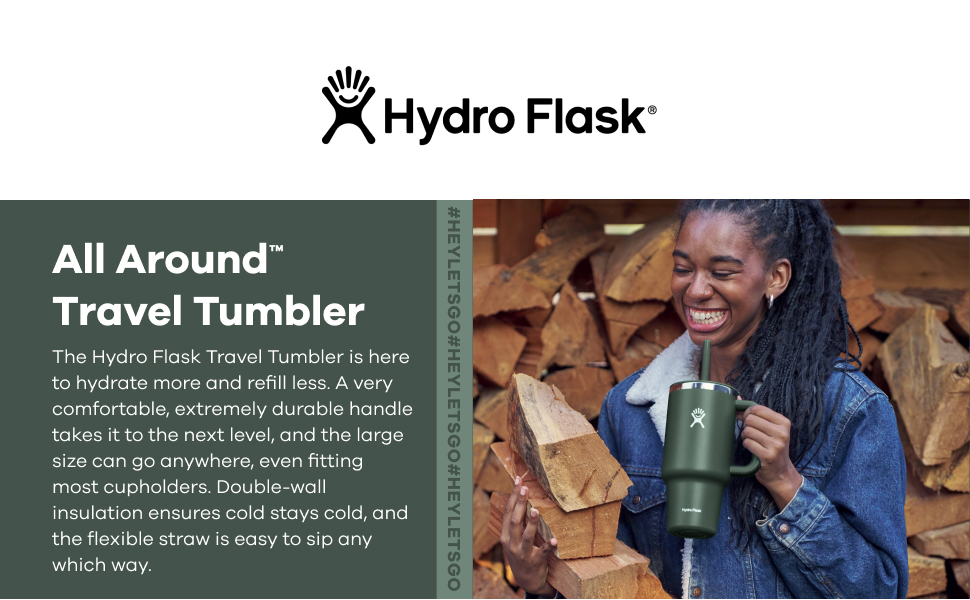
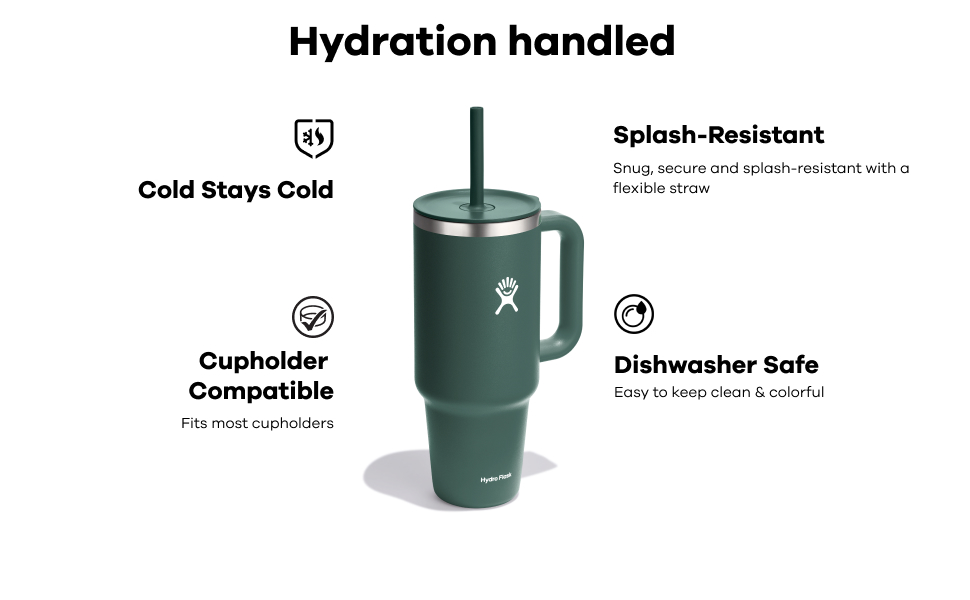


The Good, the Bad, and the Text-Heavy
The Good: The final content has a nice touch, mentioning that a portion of the proceeds is donated to build parks and contribute to the community. It’s always great to see a brand with a sense of social responsibility, especially since customers love feeling like they’re making a difference with their purchase.
The Bad: The A+ content is a bit of a snoozefest. It’s text-heavy and not very cohesive. The images don’t visually represent the features well, and there’s a disconnect between the text and images, leaving buyers confused.
Let’s Talk About Image 2
Image 2: This image highlights four core features of the thermos, but the design feels rushed. Three features have icons, but the “splash resistant” feature does not. Consistency is key! Plus, adding small explanatory images next to each feature would help customers instantly get what you’re talking about.
Final Thoughts
This set of images captures the “fun” aspect of the product with its dynamic and youthful vibe. However, it misses the mark on showcasing close-up shots of the features, leaving buyers unclear about the product’s composition. The visual elements need more relevance and detail to truly shine.
So, don’t let your product get lost in the Amazon jungle. Let’s make it the star of the show with stunning, intuitive, and unique A+ content!
If you are an Amazon Seller looking for free help with any Amazon related issues from me or other sellers with whom you can network, don’t hesitate and join our discussion forum for Amazon Sellers.
To stay in touch on Facebook, feel free to join and post into my large Amazon Seller Performance – Friendly Advice – Worldwide Facebook group, where you will be very welcome too.
Additionally, here you can watch my YouTube video, where I am presenting you several secret tips about appealing Amazon Seller Account suspensions (don’t be confused by the opening of the video, where I am enjoying a vacation – it’s a part of the story):
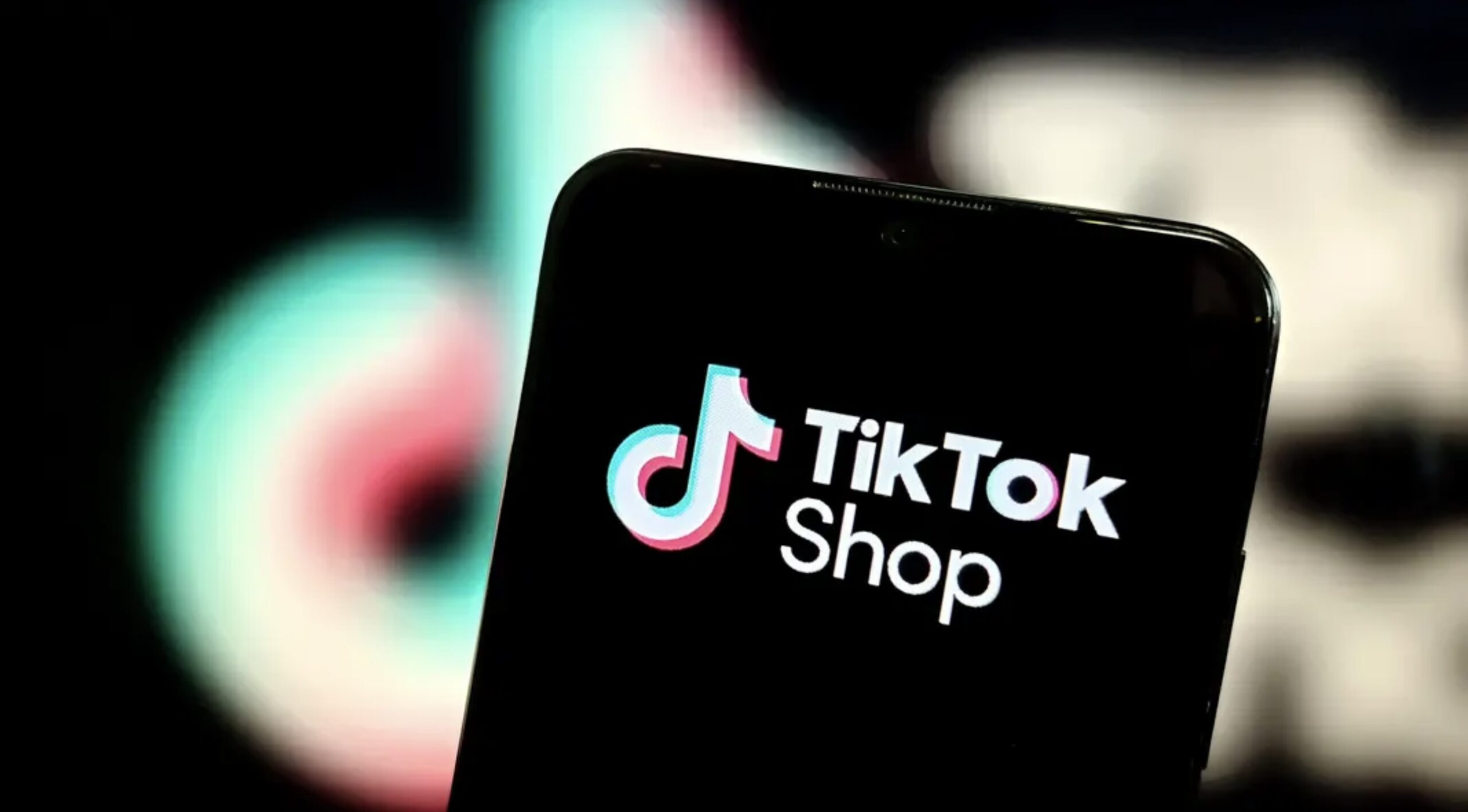
TikTok isn’t just for dance challenges and viral pranks anymore; it’s the new frontier for businesses looking to make a splash. With millions of users logging in daily for their fix of catchy and fun videos, TikTok has transformed into a selling powerhouse. If you’re not already leveraging TikTok Shops, you’re missing out on a goldmine of opportunity.
The Allure of TikTok Shops
TikTok’s charm lies in its simplicity and massive user base. It’s like the cool kid at school who everyone wants to be friends with. For businesses, this means a ready-made audience eager to discover new products. Plus, setting up shop on TikTok is straightforward and low-risk, making it a perfect playground for budding entrepreneurs.
Enter Inboostr: Your Secret Weapon
Here’s where things get exciting. Inboostr has created a database of over 100K influencers, complete with bespoke hygiene screening tools and thorough manual investigations into each influencer and their feed. Translation? We’ve done the legwork to ensure you’re partnering with top-notch influencers who can genuinely boost your brand.
Easy Peasy Logistics
Got products manufactured in China? No problem. Inboostr handles the logistics, shipping your goods to our American warehouse and managing your TikTok business. We connect your products to our big TikTok shop, giving you an easy entry into this booming market.
One-Stop Solution
Inboostr’s got you covered from start to finish. We help you find the right influencers, manage logistics, and run your TikTok business. All you need to do is watch the sales roll in.
Ready to Dive In?
TikTok Shops are more than just a trend—they’re a lucrative opportunity waiting to be tapped. With Inboostr’s comprehensive support, you can jump in with confidence and start reaping the rewards. So, what are you waiting for? The TikTok crowd is ready and waiting.
If you are an Amazon Seller looking for free help with any Amazon related issues from me or other sellers with whom you can network, don’t hesitate and join our discussion forum for Amazon Sellers.
To stay in touch on Facebook, feel free to join and post into my large Amazon Seller Performance – Friendly Advice – Worldwide Facebook group, where you will be very welcome too.
Additionally, here you can watch my YouTube video, where I am presenting you several secret tips about appealing Amazon Seller Account suspensions (don’t be confused by the opening of the video, where I am enjoying a vacation – it’s a part of the story):
-

 All Blogs & Seller News2 years ago
All Blogs & Seller News2 years agoYou would never think this could get you suspended! Amazon continues its wave of Buyer Account closures, learn what is new!
-

 Amazon Seller News3 years ago
Amazon Seller News3 years agoMeltable inventory restrictions start April 15, 2021
-

 All Blogs & Seller News2 years ago
All Blogs & Seller News2 years agoWatch out! Amazon is mercilessly cracking down on dropshipping!
-

 All Blogs & Seller News2 years ago
All Blogs & Seller News2 years agoHow to submit WEEE registration numbers on Amazon and what does it mean?
-

 All Blogs & Seller News2 years ago
All Blogs & Seller News2 years agoWhy isn’t Amazon doing anything to help third party sellers affected by the situation in Ukraine?
-

 Amazon Seller News2 years ago
Amazon Seller News2 years agoWhat is the difference between FNSKU and SKU?
-
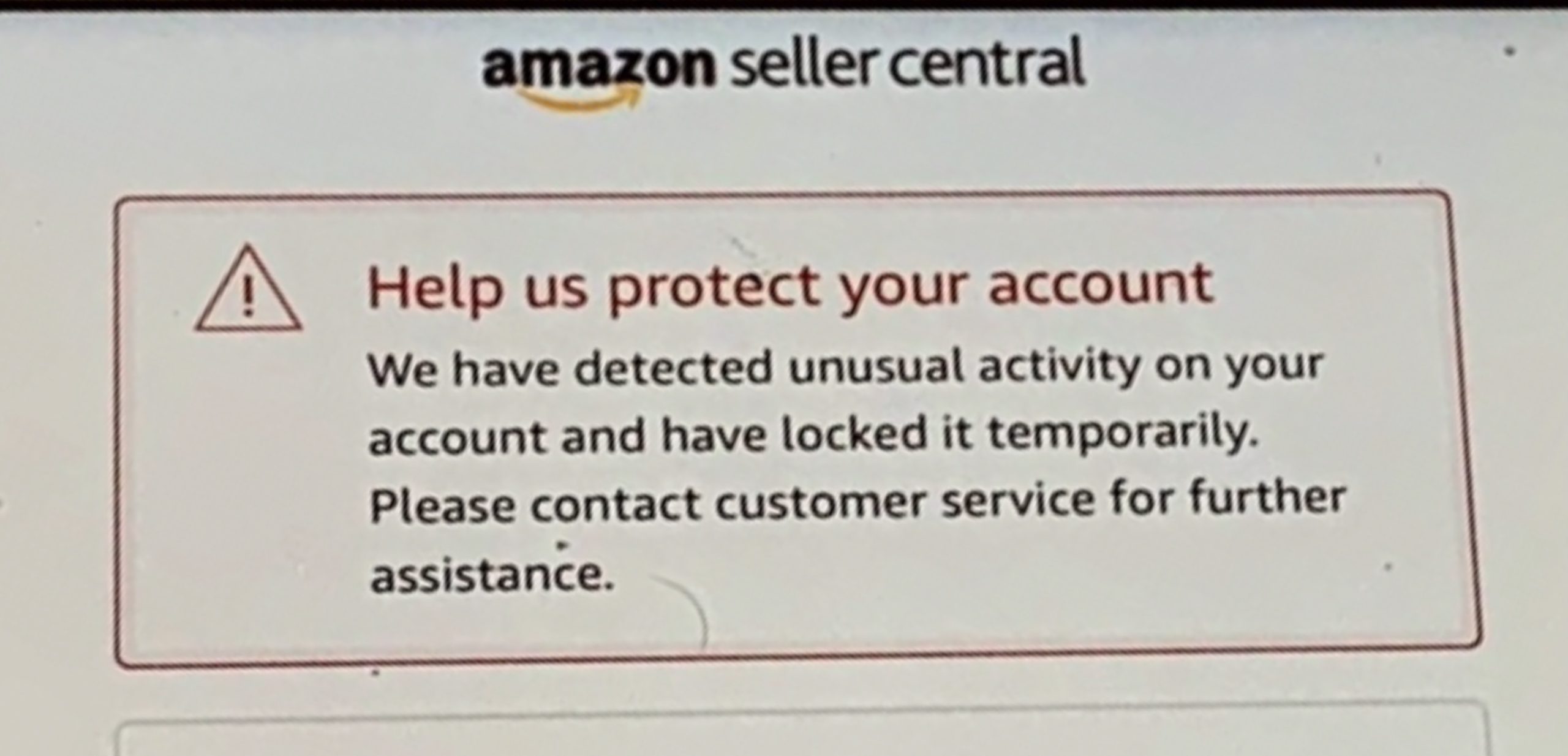
 Amazon Seller News3 years ago
Amazon Seller News3 years agoWhat to do when your Amazon Seller Account gets placed on a hold?
-

 Amazon Seller News3 years ago
Amazon Seller News3 years agoFind out if any of your Amazon listings include prohibited keywords



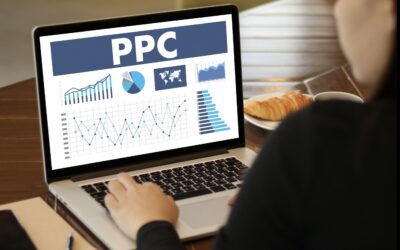










You must be logged in to post a comment Login